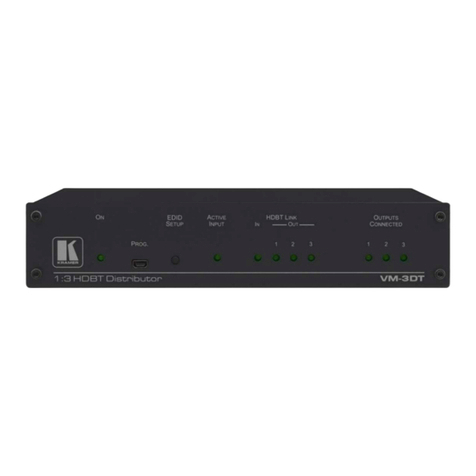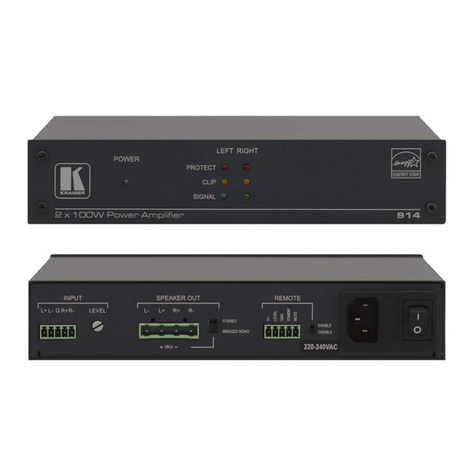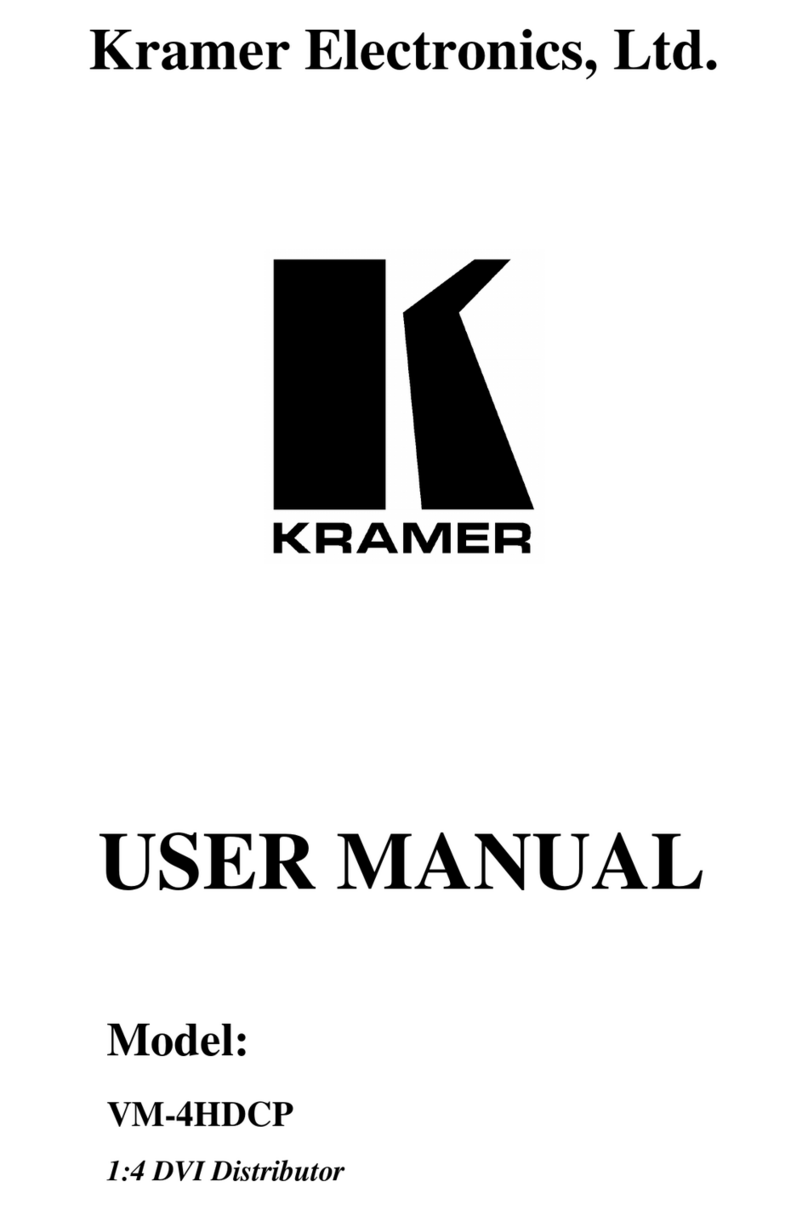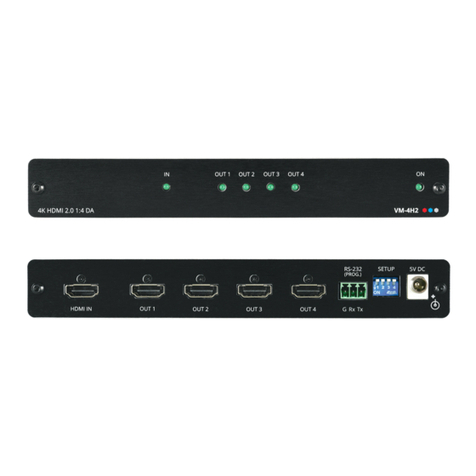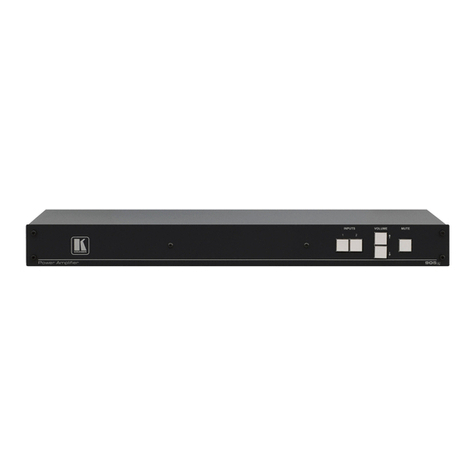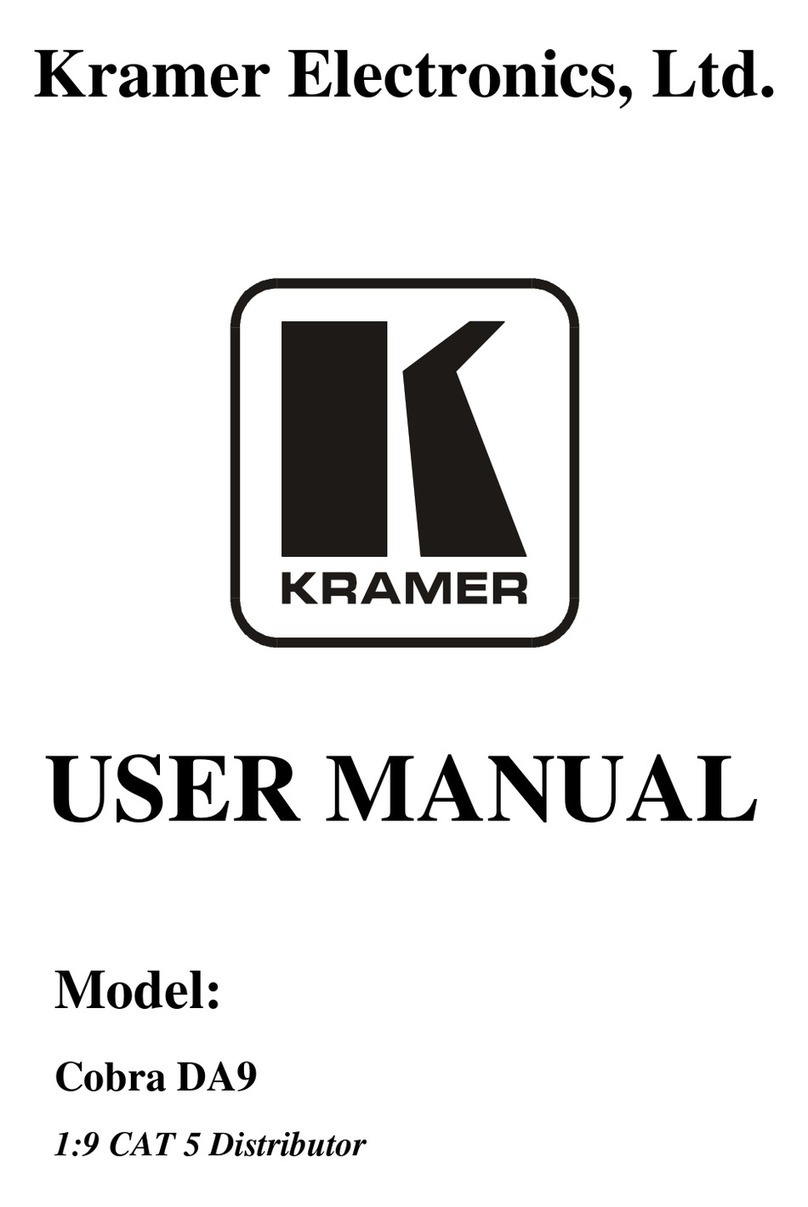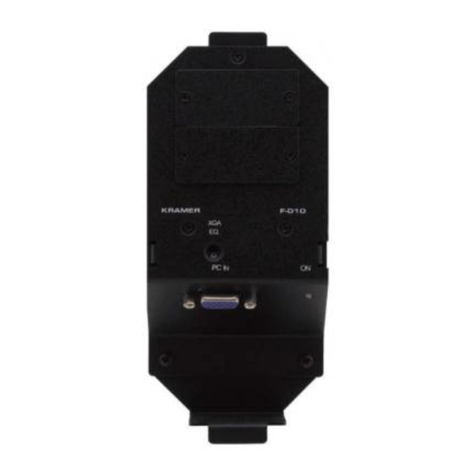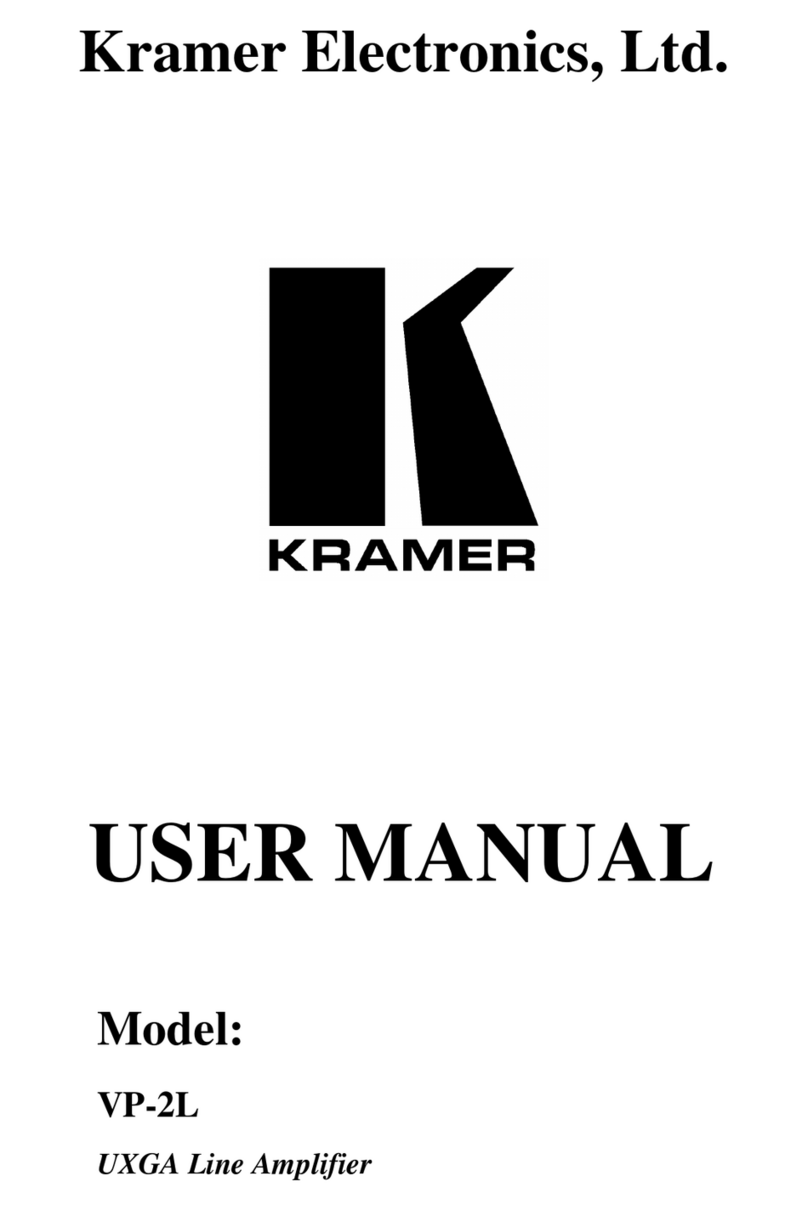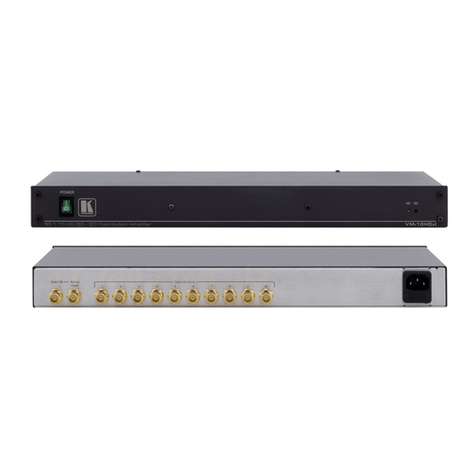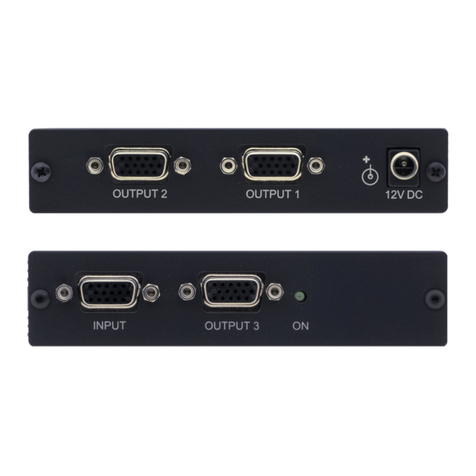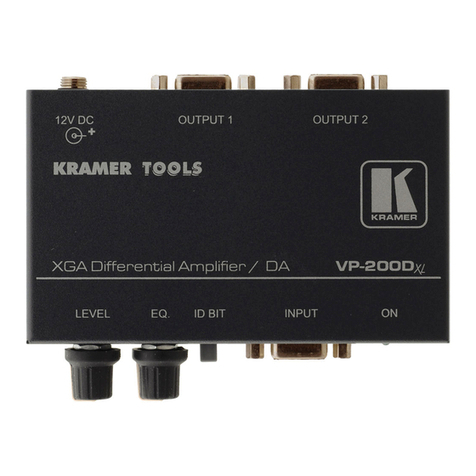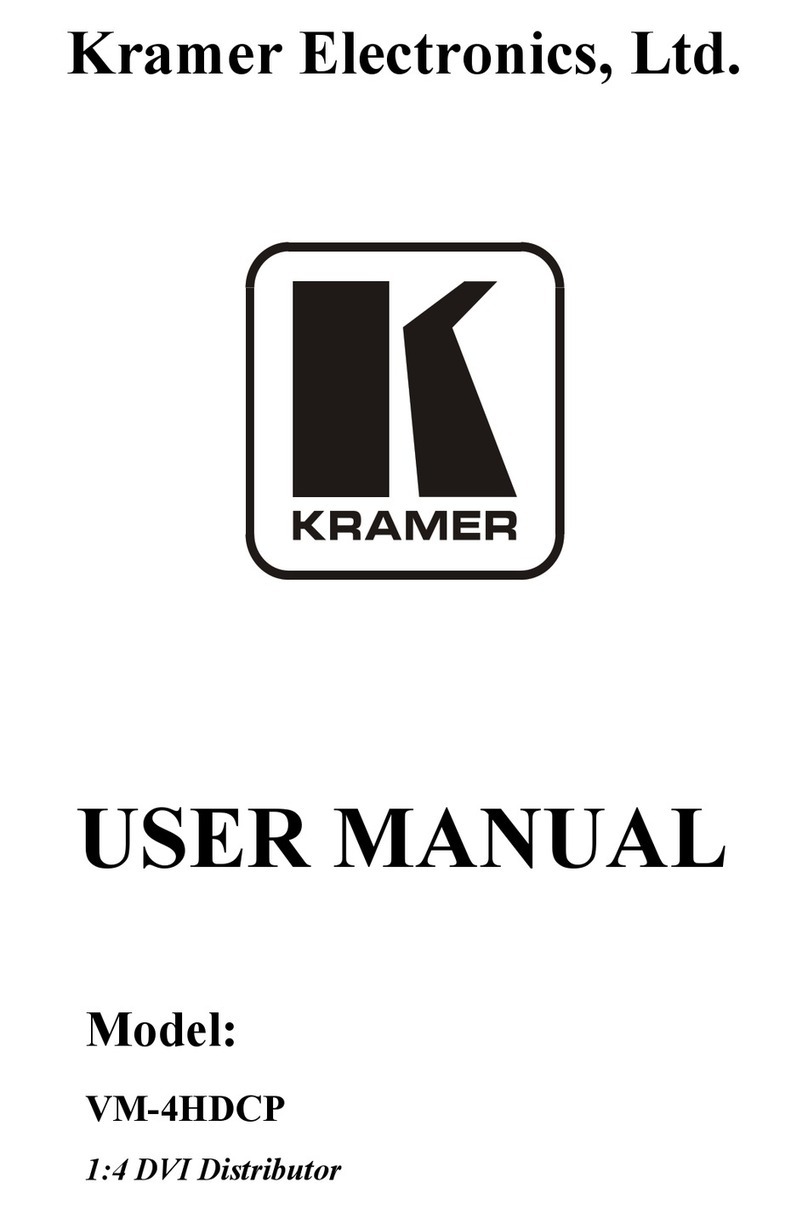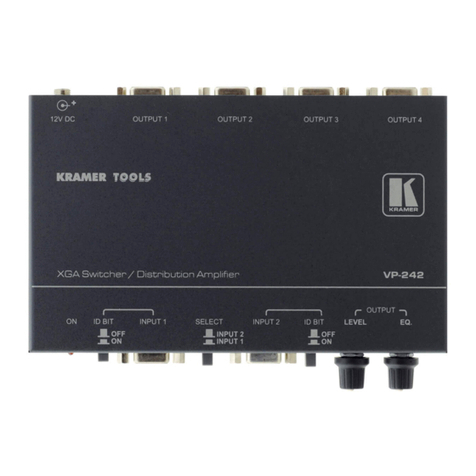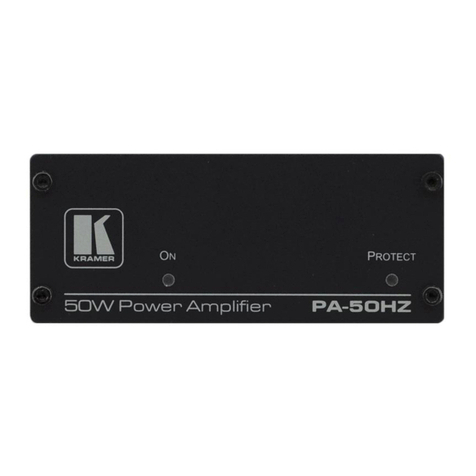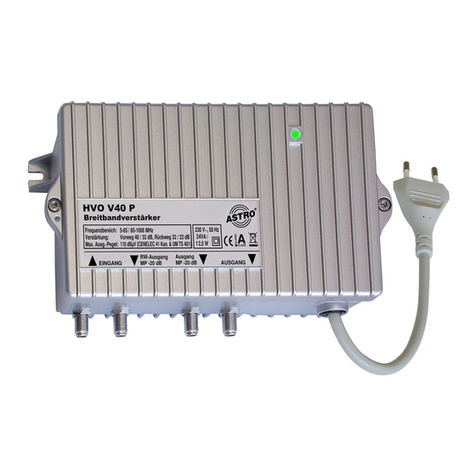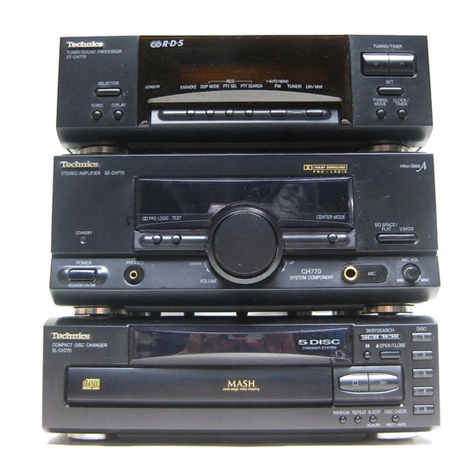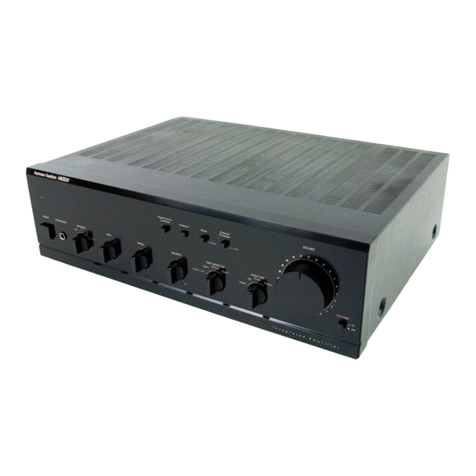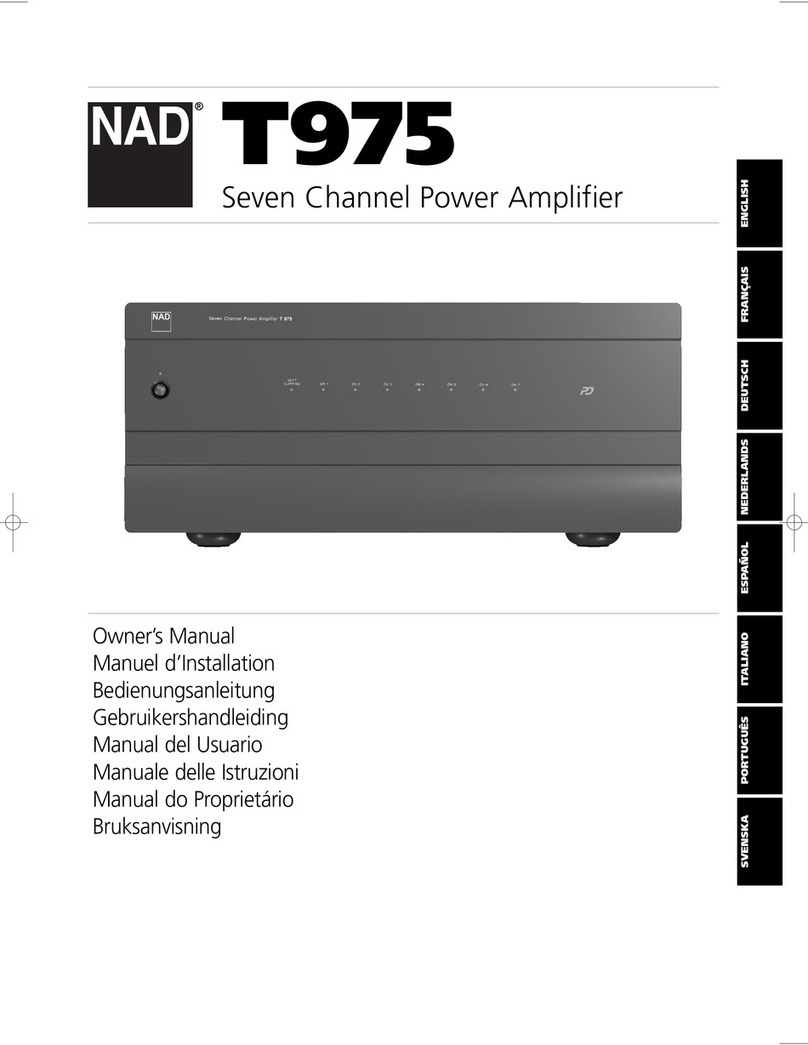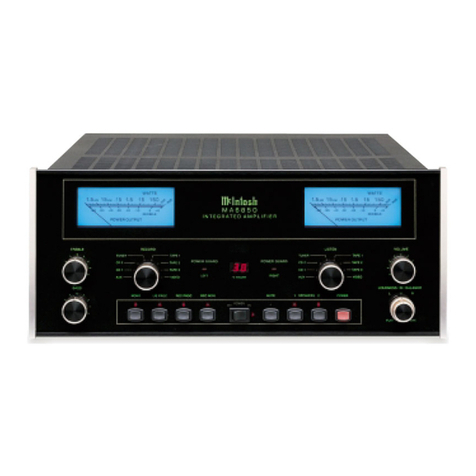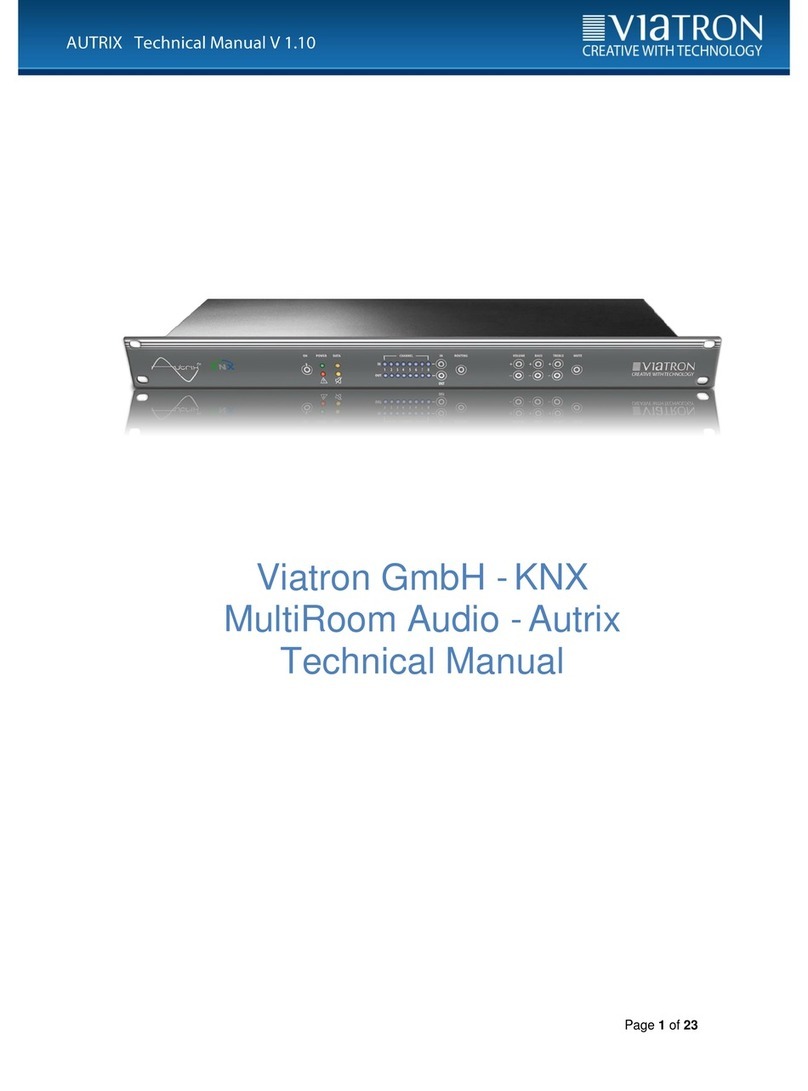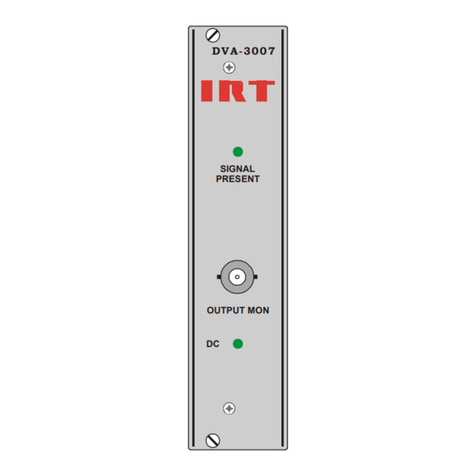
3
1 Defined by a standard published by the Video Electronics Standards Association (VESA)
When establishing a VGA connection between a PC or laptop and a display
device, a set of parameters known as EDID is exchanged between them,
which is carried over the DDC channel. In some PC graphic cards and
laptops, this information exchange is essential for proper VGA OUT
operation.
3.2 Defining EDID
The Extended Display Identification Data (EDID
1)
is a data-structure,
provided by a display, to describe its capabilities to a graphics card (that is
connected to the display's source). The EDID enables the PC or laptop to
"know" what kind of monitor is connected to the output. The EDID
includes the manufacturer's name, the product type, the timing data
supported by the display, the display size, luminance data and (for digital
displays only) the pixel mapping data.
3.1 DOCSupport
3 Overview
TheKramerTOOLSVP-200K,VP-300Kand VP-400Kare 1:2,1:3and 1:4
(respectively)distributionamplifiersforUXGAandhigherresolutionsignals.
The VP-200K, VP-300K and VP-400K acceptoneinput,providecorrect
bufferingandisolation,andthen distributethe signalto two, three or four
(respectively)identicaloutputson high-density 15-pinHD connectors.
In particular, the High Resolution UXGADA:
• Has a high video bandwidth exceeding 400MHz, ensuring that it
remains transparent even at high-resolution graphics modes such
as UXGA (1600xI200)
• Supports DDC (Display Data Channel) communication between
the input and output 1 high-density 15-pinHD connectors on pins
11,12 and 15
• Supports EDID PassThru that passes EDID signals from source to
display
• Includes the Kramer innovative integrated sync processing;
KR-ISP™ technology, which lets you achieve a sharp, stable
image when the sync level is too low, by restoring the sync signal
waveform
• Includes an ID Bit control switch as well as polarity switches
• Is 5V DC fed and is housed in a DigiTOOLS®enclosure
Overview
